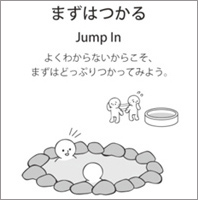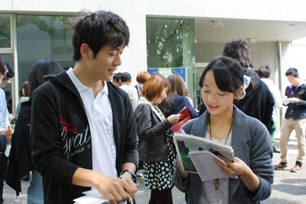Pattern Language that supports creativity
-Takashi Iba, Associate Professor, Faculty of Policy Management

Pattern language is an innovative and appealing method that supports creative activities. In pattern language, “common patterns” that exist behind creative activities are verbalized. In other words, tips for creativity are written in a format that explains “what kind of <problem> tends to arise in what kind of <context>, and how to find a <solution> for it”, and a <name> is given to each pattern. Here, I would like to explain it a little more specifically using learning patterns, tips for “creative learning”.
“Jump In” is a learning pattern with the following content. In studying or research, when you start learning something new (context), nothing is going to happen if you keep wondering whether this new field suits you or not (problem). In order to avoid this, you should find the courage to first jump in and start what you are interested in, and then later decide whether it really suits you or not (solution), because there are things you can see and realize only when you jump into the field. This is the pattern (tip) named “Jump in”.
There are 40 tips for learning in different situations and stages, such as a pattern that tells you to take a “Language Shower” in learning a foreign language, or to create a “Community of Learning”.

At the Shonan Fujisawa Campus (SFC), a booklet that introduces all the learning patterns are handed out to all first-year students since 2009 in order for students to design their studies proactively. A dialogic workshop is held for students who have just entered university, where they can talk about their own learning experiences using the learning patterns as a common language. In three years, almost 3000 students participated, and the workshop seems to serve as a trigger to think about one’s own way of learning.
In my seminar class, other than learning patterns, we have been creating and presenting pattern language for presentation, collaboration and disaster prevention. This year, we are planning to launch a research consortium for usage in corporations and organizations, therefore hoping that pattern language will be used in a wider range of fields.
Learning patterns can be viewed at http://learningpatterns.sfc.keio.ac.jp/![]() (Only available in Japanese)
(Only available in Japanese)
